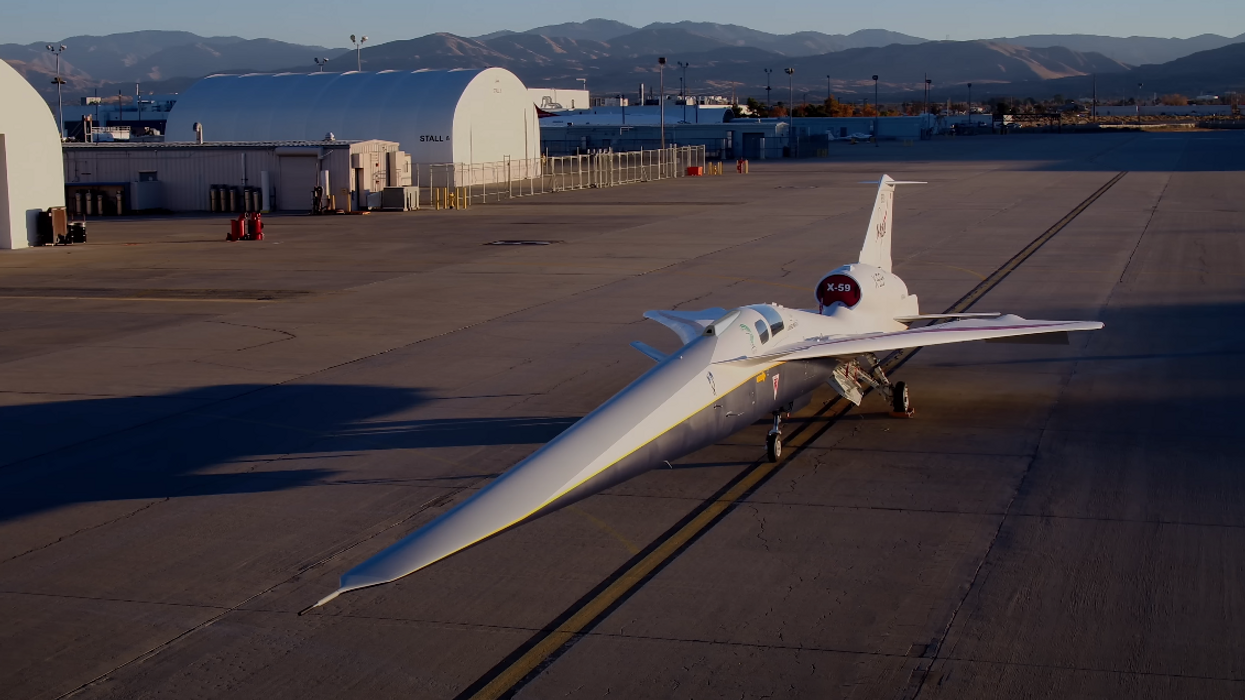
Image credit: YouTube screenshot

NASA and Lockheed Martin officially unveiled the agency's X-59 quiet supersonic aircraft on Friday. The experimental aircraft could represent the next phase in the evolution of commercial air travel, according to the agency's recent release. It is suggested that the new aircraft can travel "faster than the speed of sound," reaching a maximum speed of 925 miles per hour.
“This is a major accomplishment made possible only through the hard work and ingenuity from NASA and the entire X-59 team,” NASA Deputy Administrator Pam Melroy said.
“In just a few short years we’ve gone from an ambitious concept to reality. NASA’s X-59 will help change the way we travel, bringing us closer together in much less time.”
The X-59 has been in development at Lockheed Martin Skunk Works for years. The company received a $248 million grant from NASA in 2018, which ignited development on the project. The large grant was part of NASA's aim to take larger steps in aviation, including size, speed, and efficiency, according to TechCrunch.
Until Friday, the aircraft had only been seen in various stages of its assembly in the hangar. But it has now been made available in its entirety. Part of the goal of building the X-59 was to prove that an aircraft could travel faster than the speed of sound.
"By demonstrating the possibility of quiet commercial supersonic travel over land, we seek to open new commercial markets for U.S. companies and benefit travelers around the world," NASA's Bob Pearce said.
The aircraft can achieve these impressive feats due to its aerodynamic design. The craft is almost 100 feet long and only 29.5 feet wide. Its profile is shaped like a dart to break up the shock waves bouncing off of it during flight.
"Due to this configuration, the cockpit is located almost halfway down the length of the aircraft – and does not have a forward-facing window," NASA reported. "Instead, the Quesst team developed the eXternal Vision System, a series of high-resolution cameras feeding a 4K monitor in the cockpit."
"Once NASA completes flight tests, the agency will fly the aircraft over several to-be-selected cities across the U.S., collecting input about the sound the X-59 generates and how people perceive it. NASA will provide that data to the Federal Aviation Administration and international regulators."
It is uncertain when the aircraft will be ready for its first commercial flight.
Like Blaze News? Bypass the censors, sign up for our newsletters, and get stories like this direct to your inbox. Sign up here!